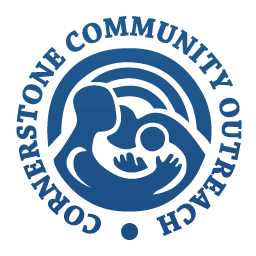In the midst of the COVID-19 pandemic, ideas around what care in shelters should be provided began to change to. The theory is for there to be a Medically Integrated Shelter Model. This isn’t a new idea for Cornerstone, but the pandemic gave the opportunity for more discussion to be had due to the increased and emergency medical needs.
Below is an excerpt from that document, that was written specifically for adaptation at Cornerstone.
Cornerstone Community Outreach
Medically Integrated Shelter
The majority of people who are experiencing homelessness have underlying medical vulnerabilities and or behavioral health issues. Our experiences show that there are not enough resources activated in the shelter system to meet these needs. And in many ways these issues can be barriers to accessing permanent housing and are part of the cause of their current situation. This isn’t new information to those working with people experiencing homelessness, but this current pandemic has highlighted it. And as so many entities and individuals are joining together in this moment to care for this population, the clarity across the whole sector is so powerful, and the “what if’s” being asked are great.
The “what if” that we’ve been asking for a long time, prior to COVID, is what if the shelter model in Chicago had fully integrated medical and behavioral health care alongside the normal shelter services? How much more fully could we serve and provide for the individuals and families in Chicago that come to us all for support and care? And applicable to this current pandemic, how would this new model reduce the isolation response needed, like what has to be done using the respite spaces at A Safe Haven, the Y’s, and the boutique hotels downtown?
So as this idea is resonating with more people now, we have been putting real-world thought to what this would look like for the system, or at least at Cornerstone. Any of the ideas we have are in “draft” mode, perceived from our perspective, and we do want them looked at from others perspectives. We have been working with an architect for general drawings and costs too. For simplicity I’ve put them in bullet point format, and they are just an example of how we could address the idea of a Medically Integrated Shelter Model.
Background
Three of our shelters are congregate and one is semi-private with shared bathrooms, and all had different positivity rates. Rates include residents and staff.
Sylvia Interim, shelter for families in semi-private rooms, had zero cases of COVID-19 Naomi, congregate shelter for women had 53% positivity rate
Epworth, congregate shelter for men, had a 11% positivity rage
Hannah Interim, congregate for families, had a 14% positivity rate
Isolation onsite for people who tested positive was tried but not optimal and probably increased the spread of COVID-19, as in all programs there are shared bathrooms, shared eating spaces, and no clear way to keep individuals apart. It was also detrimental not having medical staff to keep and eye on them as their symptoms worsened.
WIth the decompression of the shelters, our capacity dropped by half, though we are willing to provide for more.
How to upgrade to a Medically Integrated Shelter Model
The overarching idea is to combine the resources and abilities of an existing shelter provider with medical and behavioural health providers, and have the shelter facilities built out to meet a continuum of needs. There is the model of respite coming out of hospital, but not a model providing the support for people coming “off the streets” into shelter, and that’s where we see ourselves doing what we do best.
